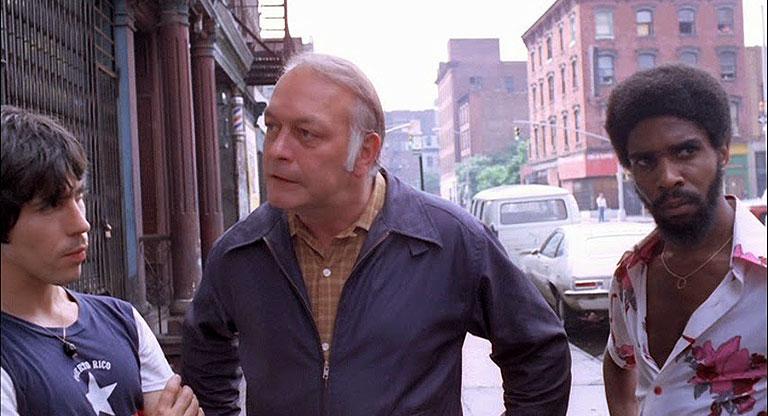
Future Kracauers investigating the cultural conditions that laid the groundwork for Trumpism will find their Caligari in the Cannon-produced action films of the 80s, of which Invasion U.S.A. is most exemplary. Its opening scene is fully loaded: a boat of weary Cuban refugees approaches the shore of Florida, where it is greeted by a U.S. coast guard vessel. "Bienvenidos a Estados Unidos!" announces a uniformed officer, grabbing the hand of an elderly man. He fires upon him at point blank range, signaling the others to spray bullets into the literally huddled mass of men, women, elderly, and children.
Are these the first ICE agents? Alas, Uncle Sam is off the hook – it turns out the welcoming party is in fact a costumed band of Latin American communist guerillas led by a Soviet operative. They've seized the boat because they know these people who aspire to a better life are in fact a cover for the real cargo: pounds upon pounds of cocaine, which can be exchanged for weapons. (This twist feels like a pointed tsk directed toward the innocent refugees who have just been murdered, for their plight has allowed them to serve as unwitting drug mules.) These weapons, and many others, will fire incessantly over the next 100 minutes as the guerillas incite Miami race riots, massacre packed Christmastime shopping centers, and plant bombs on school buses. All that stands between the United States of America and the brink are plucked-from-retirement ex-CIA agent Chuck Norris and his portable anti-tank missile launcher.
Why are these movies so appealing? For some, the misanthropic, alternate cartoon-reality of 80s action films are gleefully laudable as the ultimate self-own – a blunt exposé of the jingoistic hysteria that many people on the right mistake for patriotism. They act as an indictment of the dizzying levels of fear and paranoia, on the order of Dr. Strangelove's General Jack D. Ripper, that grip the simple minds of the powerful people and societies that create them. Invasion U.S.A. is feeble from conception: despite sharing the name of a Cold War-era propaganda film, the movie was purportedly inspired by Chuck Norris reading an article about terrorism in Reader's Digest and thinking, as he told an interviewer for the South Florida Sun Sentinel, "Boy, that's scary." (I am unaware of other films inspired by Reader's Digest articles, but surely none of them feature dual-welded Uzis.) That Invasion U.S.A. and other combustible Cannon Films of the era signifies something of the mindset of the people in charge of running the United States government, whether in the 80s or today, is indeed itself frightening. But gathering in solidarity to revel in its absurdity provides an uncanny sense of comfort. (It is, of course, cool to just watch shit blow up.) Just keep telling yourself it's only a movie.


